Between sky and abyss
Setting sail to try to understand the secrets of the earth: this is the scientific adventure experienced by Carlotta Ferrando. The story of a doctoral student who has just spent two months of intensive research in the middle of the Indian Ocean.
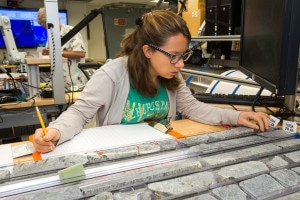
Welcome aboard the Joides Resolution. At 140 meters long, it is one of the scientific drilling vessels used by the International Ocean Discovery Program (IODP). A doctoral student at Géosciences Montpellier as part of the European ABYSS project, Carlotta took part in the 360 Southwest Indian Ridge expedition from November 30 to January 30. The aim of this sea campaign was to drill into the rocks of the oceanic crust south of Reunion Island.
Understanding the formation of the oceanic crust
What are the challenges of the mission?
The main one is to study the processes involved in the formation of the oceanic crust. At the heart of the oceans, tectonic plates diverge at the ridge, bringing magma—which comes from the partial melting of the Earth's mantle, several tens of kilometers below the surface—into contact with the marine environment. As it cools, this magma forms the oceanic crust.
What does your work involve?
It involves analyzing samples in the form of "cores" taken by drilling. The oceanic ridge is a unique place, the meeting point between the ocean and the depths of the earth. It is one of the only places where our planet's interior and exterior interact! Magma, rocks, and water form an astonishing ballet there, bubbling with chemical reactions. My role is to identify the minerals present and analyze their chemical composition in order to study the interactions between magma and rock.
Messages from the heart of the earth
How deep are the boreholes drilled?
On this expedition, we drilled to a depth of 800 m into the oceanic crust. There are 700 m of water between the hull of the ship and the ocean floor... This is a record: the deepest drilling ever achieved in a single expedition into the rocks of the magmatic oceanic crust! The deepest scientific borehole ever drilled by the JOIDES Resolution is 2.1 km.
So what you're looking at under the microscope is the core of the Earth?
Far from it; the outer part of the Earth's core is nearly 2,900 km below our feet. What I'm looking for in minerals are messages from the depths. These messages are rich in information: the mineralogical and chemical composition of rock samples can teach us a lot and change our understanding of the dynamics of crust formation.
Next step?
The samples have just arrived at the lab, and work is resuming, on land this time. It will take time to process and analyze all the samples. So no publication is planned for a few years. See you in 2018!
Floating laboratory
On board the Joides Resolution are 120 people of all nationalities, including 30 researchers from all disciplines. But there are also engineers, sailors, drillers, cooks, and more.
In this floating factory dedicated entirely to research, the work is intense, 24 hours a day, 7 days a week: "Nothing stops the drilling, except very bad weather or technical problems. Samples arrive constantly. Physical and chemical analyses: the labs run at full speed, day and night. The teams work 12-hour shifts... which quickly spill over: it's not uncommon to work 18 hours straight!"
It's an experience that can be difficult at times, but one that proves particularly valuable for a doctoral student. "There is constant exchange between researchers of all ages and from very different fields of expertise: we all look at the same object, but from different angles. There is so much to learn from this confrontation of ideas and points of view, from this constant emulation."
For two months, Carlotta was a willing prisoner of this "science bubble" where it is easy to forget the contingencies of "normal" life. Her impressions upon her return? "It's an extraordinary crash course! An ideal way to learn scientific practice." It was also a wonderful adventure that left her with incredible images, "evenings playing guitar on the deck with the setting sun on the horizon, out at sea... nowhere!"
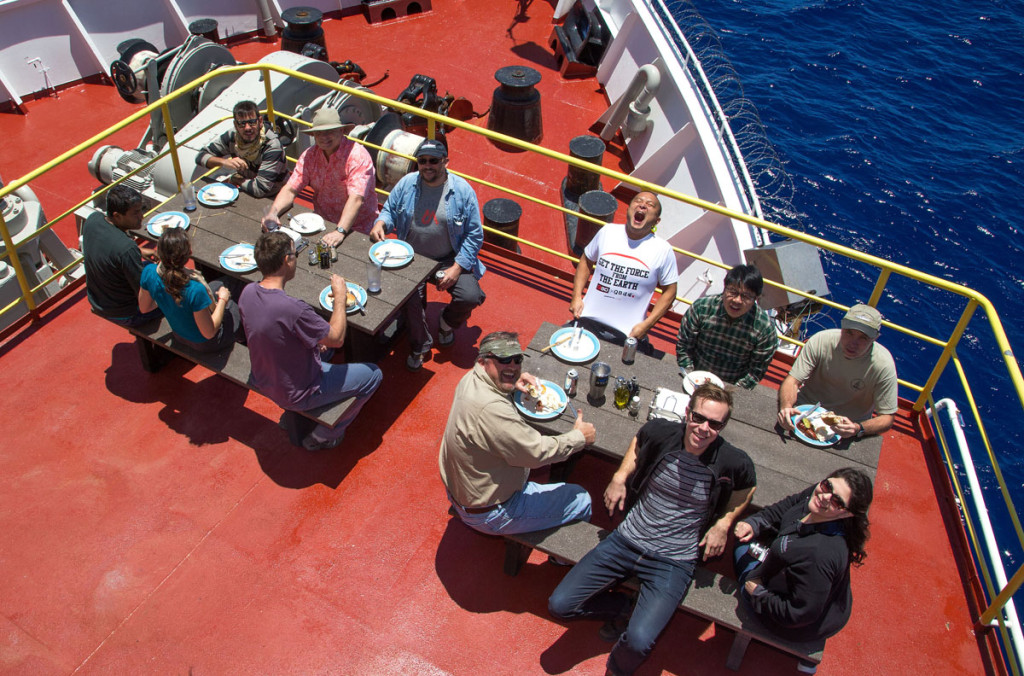
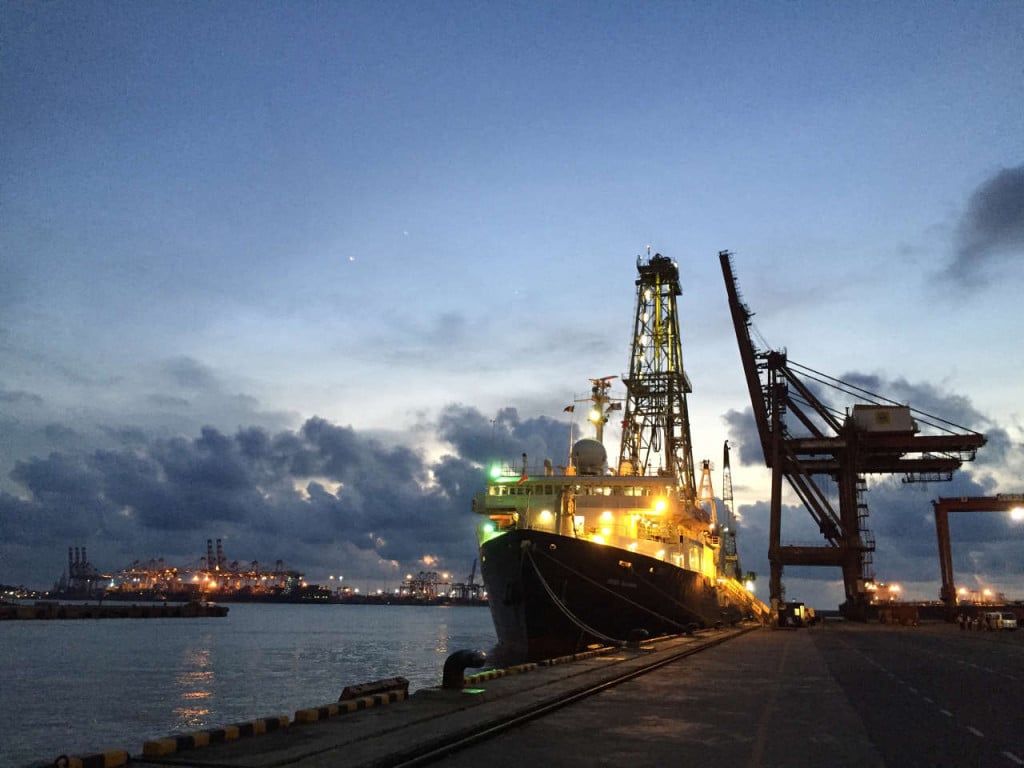
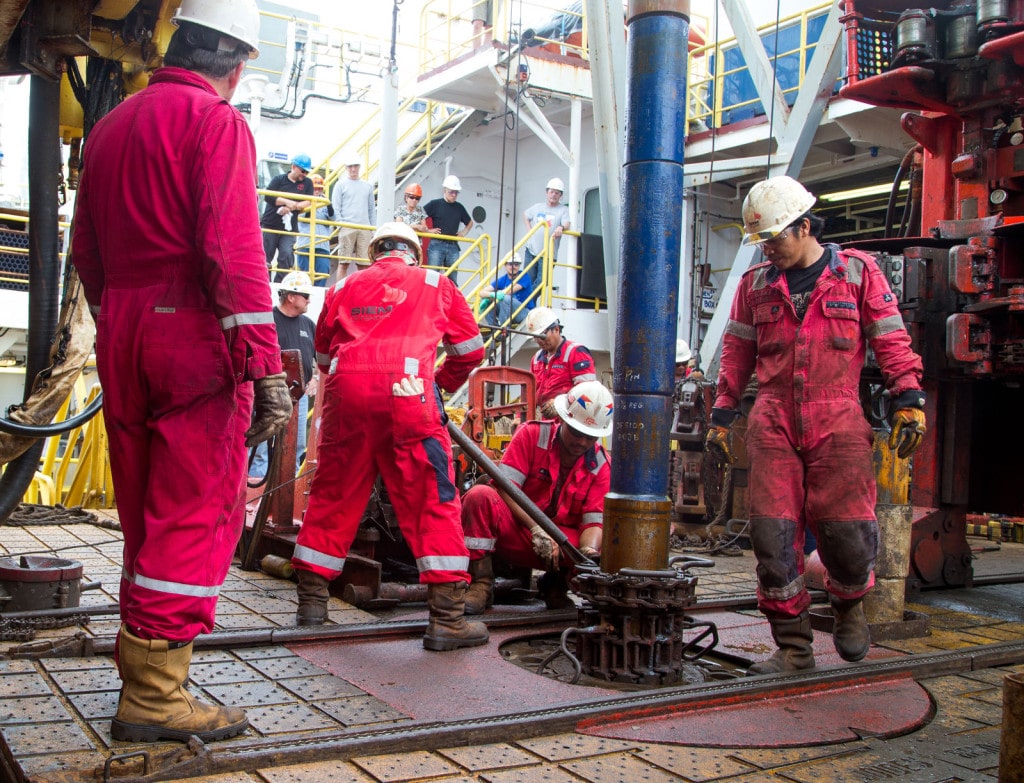
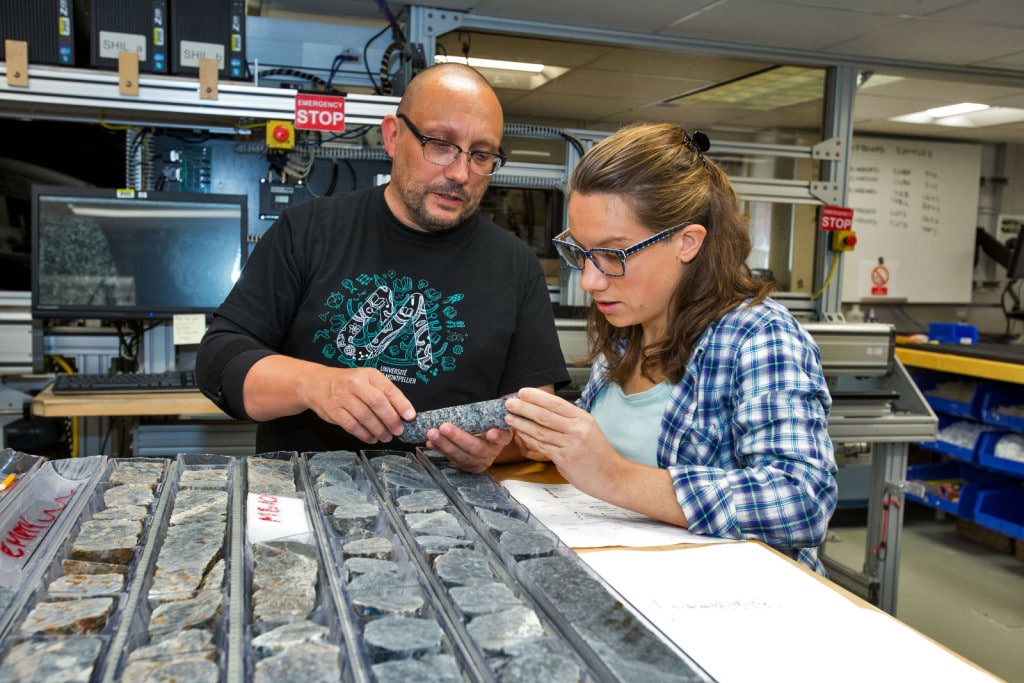
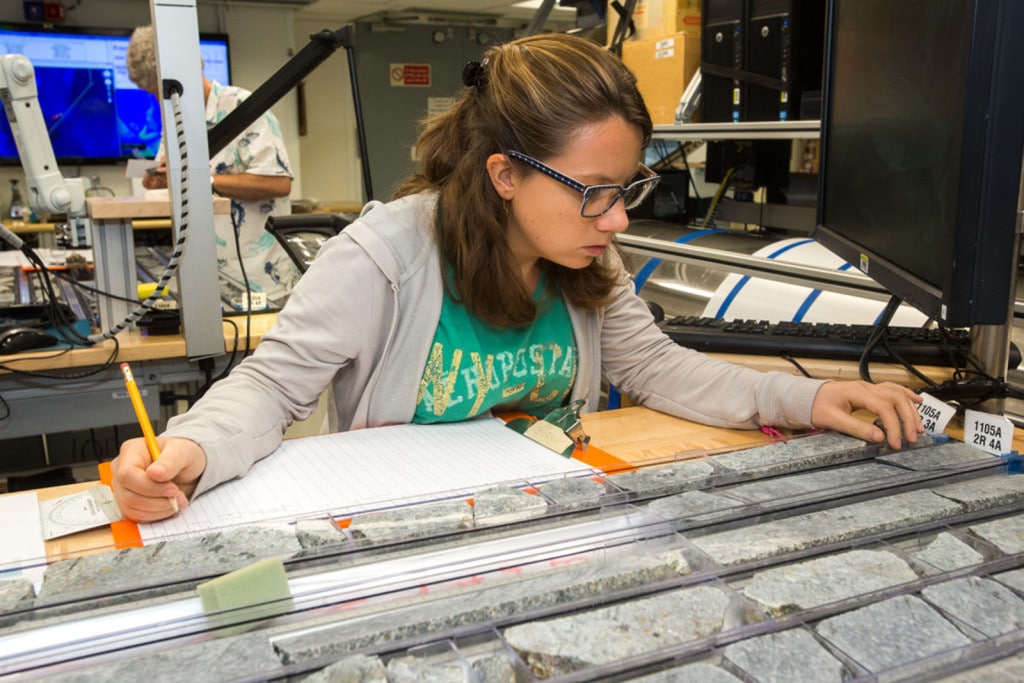
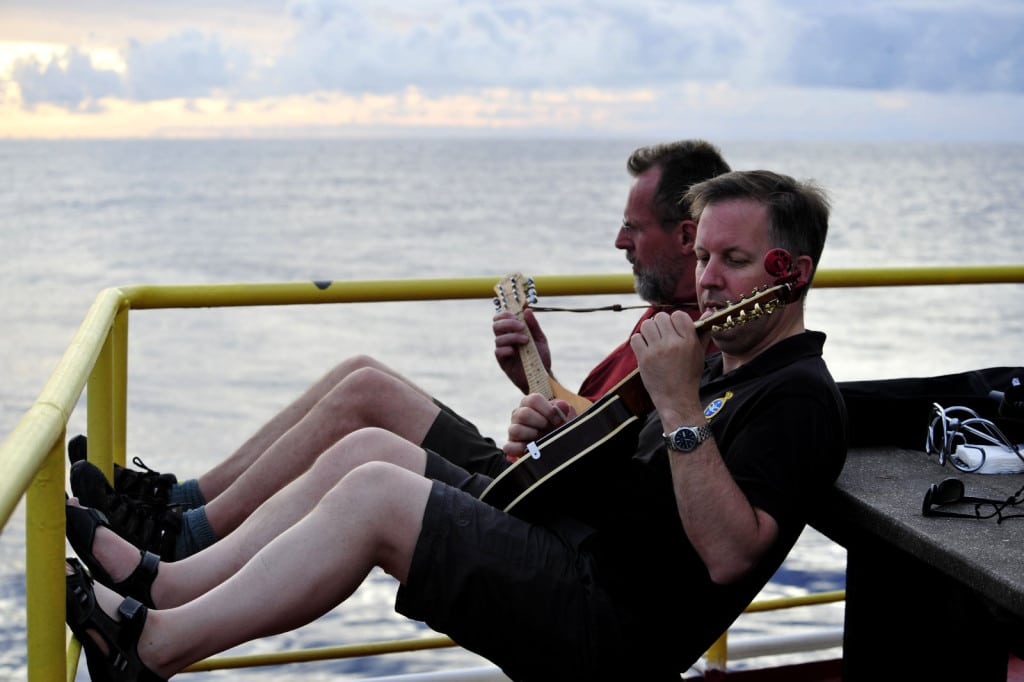
Photos: Carlotta Ferrando, Benoit Ildefonse, Gustavo Viegas, and courtesy of Bill Crawford, IODP Imaging Specialist